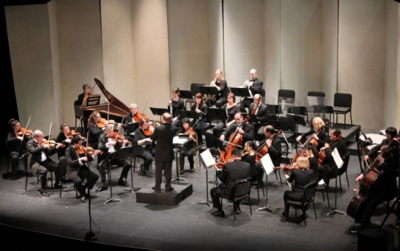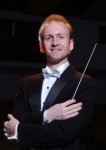Thank heavens for the Knoxville Symphony Orchestra’s Chamber Classics Series.
The series has been, and is continuing to be this season, a breath of fresh air and a true opportunity to hear works that bypass the KSO’s full orchestra concerts—and in the incredibly subtle acoustical environment of the Bijou Theatre. The orchestra, under the direction of KSO resident conductor James Fellenbaum, opened that new season on Sunday afternoon with three works: Mendelssohn’s Hebrides Overture (“Fingal’s Cave”), Carl Maria von Weber’s Concerto No. 2 for Clarinet and Orchestra, and Franz Schubert’s Symphony No. 2 in B-flat Major.
Moving straight to the Schubert, this was an eye-opening and energetic performance of a work that sadly doesn’t get as much attention as the composer’s 8th, 9th, and 1st, but deserves to. When one realizes that Schubert was only 18 years old when it was written, it feels almost other-worldly in that its competence exceeds that of Mozart and Beethoven at a similar age.
The Andante movement’s theme and variations was continually intriguing with crisp and lovely playing courtesy of the woodwinds. The short third movement features a theme carried by the oboe in the Allegro vivace, in this case beautifully spun into life by principal oboe Claire Chenette.
The Weber Clarinet Concerto was gorgeously molded by clarinetist Victor Chavez in a performance that floated on marvelous phrasing and a rhythmic integrity highlighted by a simply luscious tone across the instrument’s wide range.
Those in the audience used to hearing Mendelssohn’s Hebrides Overture with a full size orchestra in a large hall received an unexpected treat in this chamber orchestra performance–that of the woodwind presence and texture not usually as prominent. All in all, though—and I say this as a Mendelssohn lover—I must admit that the charm of this addictive work comes from the overpowering lushness and rhythmical waves of strings that ebb, flow, undulate, and crash onto shore. That effect was simply not available with the pared-down string forces in the chamber orchestra.







